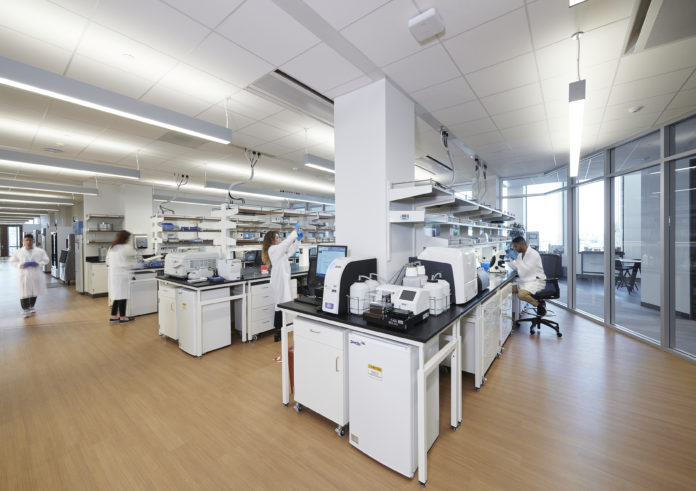The project would offer offices and manufacturing space for established companies and early stage startups, and sit on the campus of county-owned Harbor-UCLA Medical Center.
The Lundquist Institute already occupies a portion of the campus, where it opened BioLabs at The Lundquist Institute, a coworking space for life science startups, last year. BioLabs filled up quickly, which Lundquist Institute President and Chief Executive David Meyer said “speaks to the need for space for startup companies in L.A. County.”
The new Lundquist project would allow companies to move from BioLabs to a larger property with permanent office space. Meyer envisions that entrepreneurs would identify problems at the hospital, launch startups to fix those problems at BioLabs, manufacture products for preclinical and clinical trials at the biotech park, then return to the hospital for distribution.
“This has been our vision for a while now,” Meyer said. “This is the final piece that we need to make this circle complete.”
Meyer added that he hopes the development will keep bioscience companies in L.A. instead of having them move to the Bay Area or other regions as they grow.
He said the idea for the project came about a few years ago during a bioscience “mini conference held at USC.”
One of the speakers, Supervisor Mark Ridley-Thomas, showed a site plan for a 15-acre bioscience industrial park, Meyer said, and “that was the start.”
As part of county’s Nov. 10 approval of the project, the Lundquist Institute was granted a 55-year ground lease on the site with two 20-year extension options to develop the campus.
“The Lundquist Institute is a transformational asset to the region, and I am proud it will become the home of this revolutionary biotech park,” Ridley-Thomas said in a statement. “I have long been a proponent of establishing a bioscience hub in Los Angeles, and this is concrete and catalytic progress to realize that dream. The bioscience boom is on its way to L.A.”
The new project would replace World War II-era barracks that were built when the hospital was used as a military facility.
The first phase would build out three buildings totaling up to 250,000 square feet and would include a laboratory, manufacturing and office space.
In all, the biotech park would cover 15 acres divided into a north and south parcel. The north parcel is set to be developed first and already has necessary clearances.
The south parcel is smaller, and Meyer said it would be developed later because it did not come with an environmental impact report and California Environmental Quality Act clearance.
Meyer said the institute has 15 years to complete the first part of the project before it needs to move to the second phase, but it could finish the work much sooner.
The institute is looking for a developer. “Our goal is to have a qualified developer come in, design the facility, build the facility and run the facility,” Meyer said.
“We don’t want to assume a lot of risk by getting into a business of real estate and real estate developer,” he added
The Lundquist Institute holds the space under a ground lease and plans to sublease it to the developer. Under a ground lease, different entities own the land and the building or improvements made to the land. At the end of the lease, improvements made to the land revert back to the property’s owner.
Ground leases can be a desirable option for builders that want to develop land but don’t own it. Landowners receive a reliable monthly check with little to no effort. Most ground leases have lengthy terms, making them a valuable, hands-off income stream for owners.
Meyer said he expects to have a developer tied to the project within a month.

